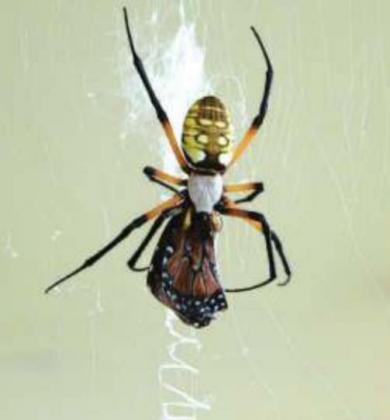Animal Behavior: The more you know, the more amazing it is
The scientific study of animal behavior is called Ethology. Much of Ethology is concerned with understanding what is instinctive behavior and what is learned behavior. Instinctive behavior, sometimes called innate behavior, is inherited and not based on any prior experience. Exactly how instinct is transmitted from one generation to the next is not fully understood, but the fact that it exists and the resulting observable actions are what I find really fascinating.
Consider this: A sea turtle crawls up on a beach, digs a hole in the sand, lays eggs and then goes back to the sea and swims off, not to return for at least another year. Every female sea turtle of that species that was originally hatched on that beach does the same thing at the same time of year at the same place. And they have been doing it for centuries! How do they know to do this? They didn’t see their mother do it. They are solitary animals, so they didn’t just “follow the leader” to do it.
Here is another example. A baby bird hatches, momma and daddy feed it, it grows up, starts to fly and feed itself. Then next year it goes through a mating ritual, chooses a mate, builds a nest, lays eggs and incubates them, all actions that the bird had never observed before. And this happens SUCCESSFULLY over and over for hundreds or thousands of generations and millions of individual birds of that species.
Bird migration has always been fascinating to people because it is diffcult to comprehend such a small animal being physically able to fly such long distances, in some cases without stopping. But aside from the physical feat, how do they manage to know where they should be going and how to get there? For the species to survive, it is important that they get to the correct winter and summer ranges in order to have the proper food supply and/or nesting grounds. To make it more amazing, for some species, the juvenile birds do not migrate with the adults!
I have been watching a large yellow garden spider living just outside our window where I can observe it closely. Every so often she eats her web and then rebuilds it. Watching her reconstruct the web by walking around the circumference and sticking the silk to the radial spokes shows what appears to be a concept of geometry and engineering. Whatever it is, it is clearly instinctive, because she never saw her mother do this. In fact she never saw her mother period.
Embryonic-sized opossum babies know to crawl through their mother’s hair to reach her pouch, or else they will shortly die.
Most reptiles never see their parents and receive no help from them in finding food, avoiding predators, etc.
All of the above are probably instinctual, whether we understand exactly how that works or not. But animals do some pretty amazing things that are clearly learned activities also. Many animals appear to have a memory of the location of various things in their home range, certainly at least where water, reliable food sources, nests and dens, etc., are located. They also learn from their own experience; if you have ever watched a squirrel figure out the logistics required to get to a particular bird feeder, you know that once they have done it successfully, they remember exactly every step necessary to get to it again. I don’t know if it is instinctual
or learned, but I have always been fascinated by the ability of some prey animals to be able to recognize at some distance the difference between a predator and a prey animal. Whitetailed deer pay little attention to any squirrel, rabbit, turkey, goat, sheep or any of the exotic ungulates. Even cattle, which are many times their size, don’t really upset deer, although the deer do usually give cattle their space. But yet the smallest dog, cat or fox, all clearly too small to be a threat, can cause the white flag to go up and the deer to flee. Most predators have both eyes in the front of their head while most prey animals have their eyes on the sides…do the deer know this? If so, how do they know?
The more I know about the natural world, the more wondrous it seems.
I am available every Friday at Riverside Nature Center from 10 to 12 to talk one on one with anyone with questions or who just wants to talk about any issues related to nature.
Until next time…
Jim Stanley is a Texas Master Naturalist and the author of the books “Hill Country Ecology,” “Hill Country Landowner’s Guide” and “A Beginner’s Handbook for Rural Texas Landowners.” He can be reached at <jstmn@ktc.com>. Previous columns can be seen at <www.hillcountrynaturalist.org>.


